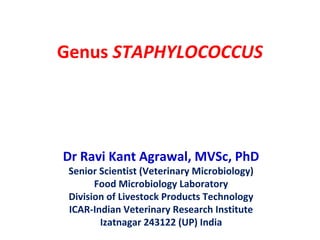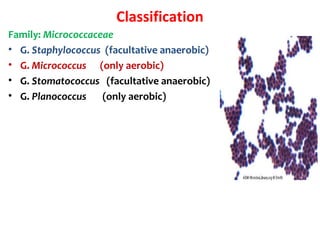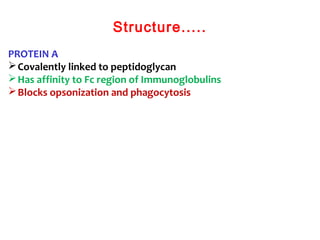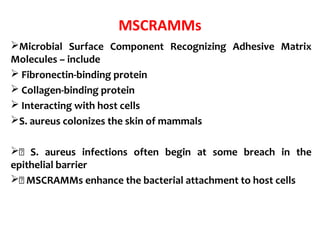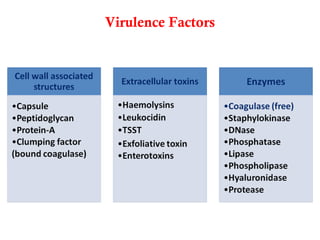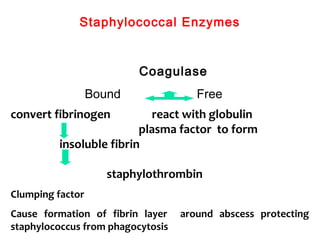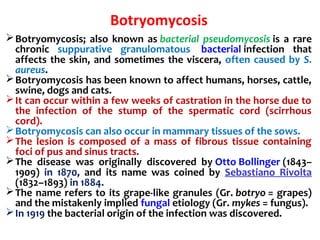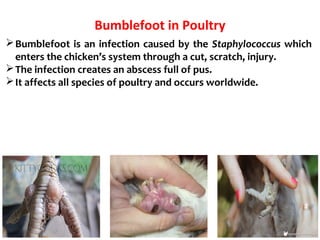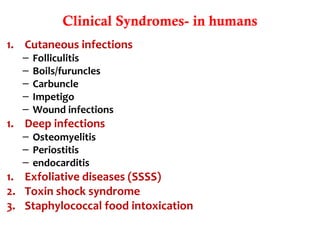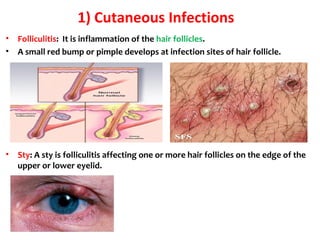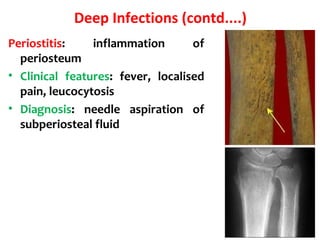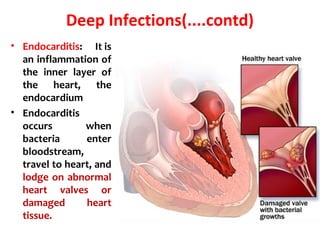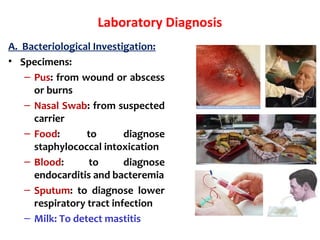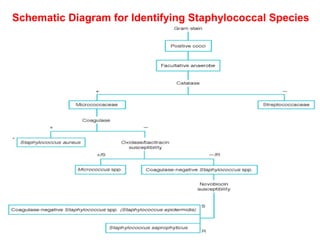This document provides information on the genus Staphylococcus. It discusses the morphology, classification, virulence factors, and diseases caused by Staphylococcus species. Some key points include:
- Staphylococcus is a genus of gram-positive bacteria that forms grapelike clusters and includes major human pathogens.
- Important virulence factors include toxins like alpha toxin, enterotoxins, and exfoliative toxins. Enzymes and surface proteins also contribute to pathogenesis.
- Major diseases caused by coagulase-positive Staphylococcus include mastitis, tick pyemia, exudative dermatitis, and botryomycosis in various animal
